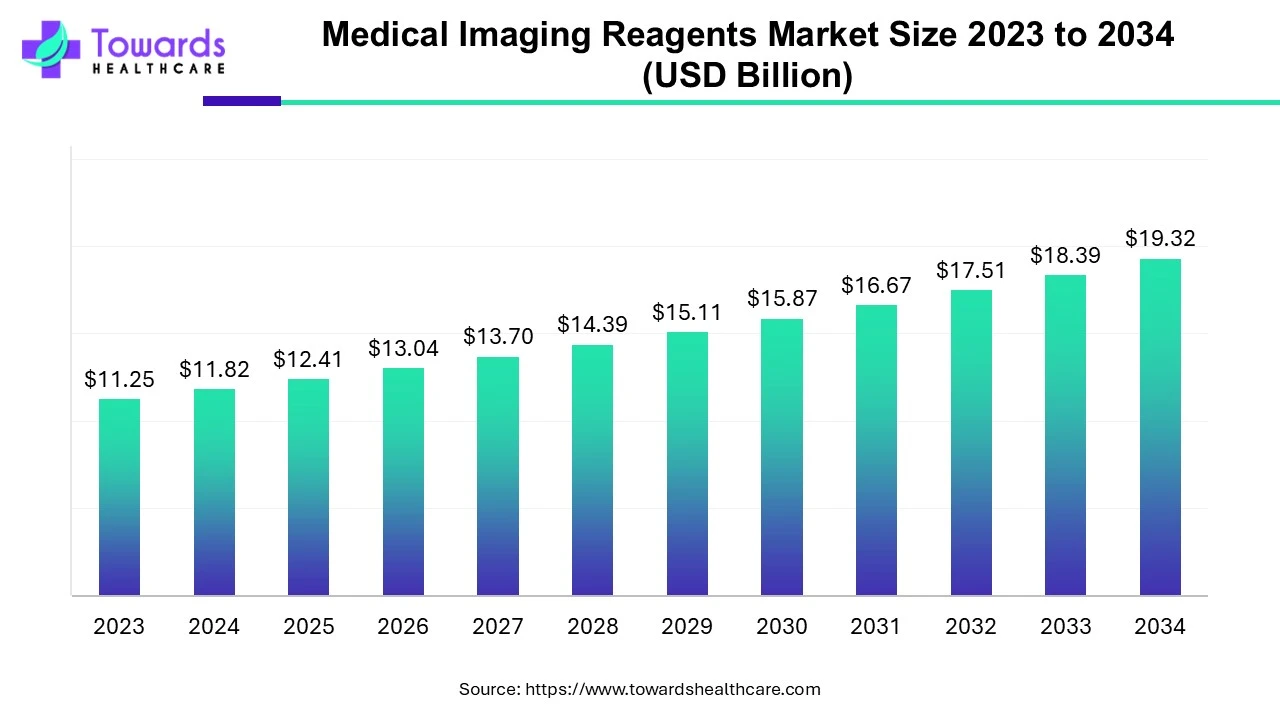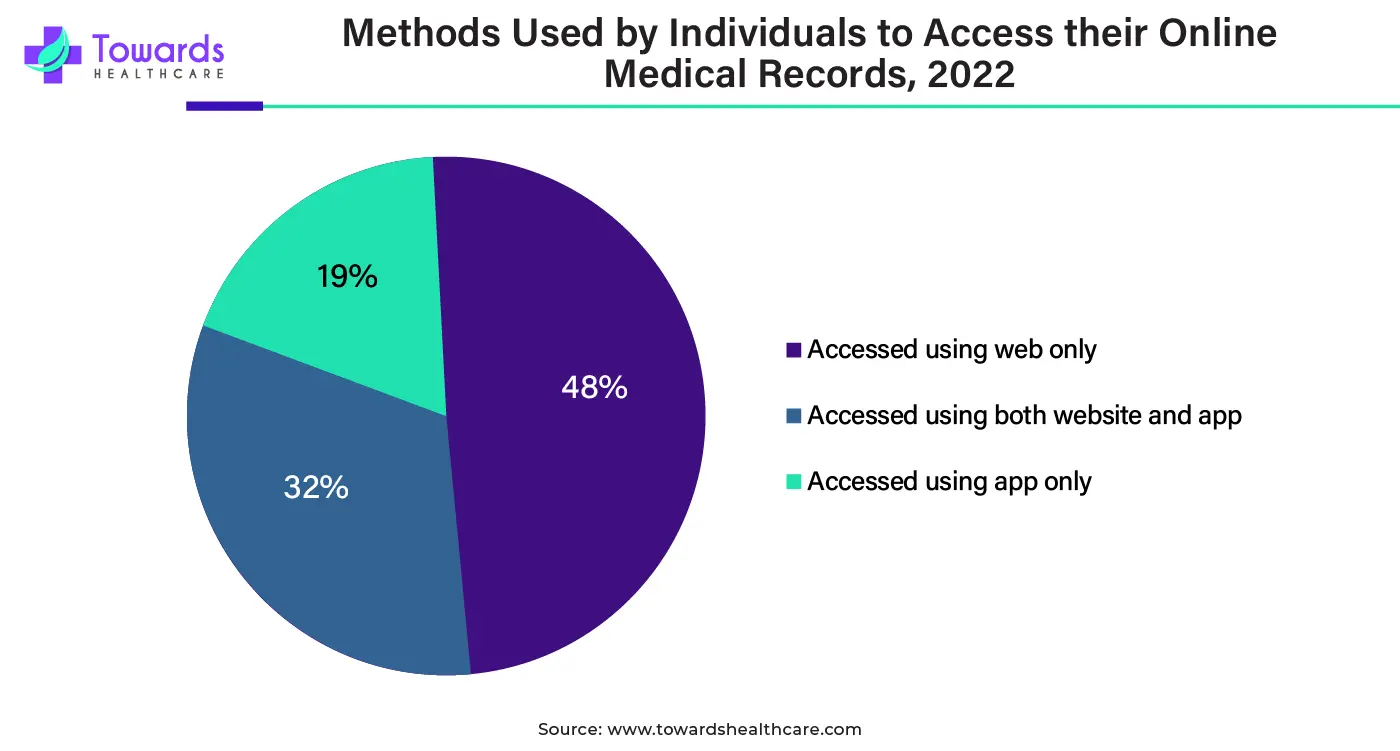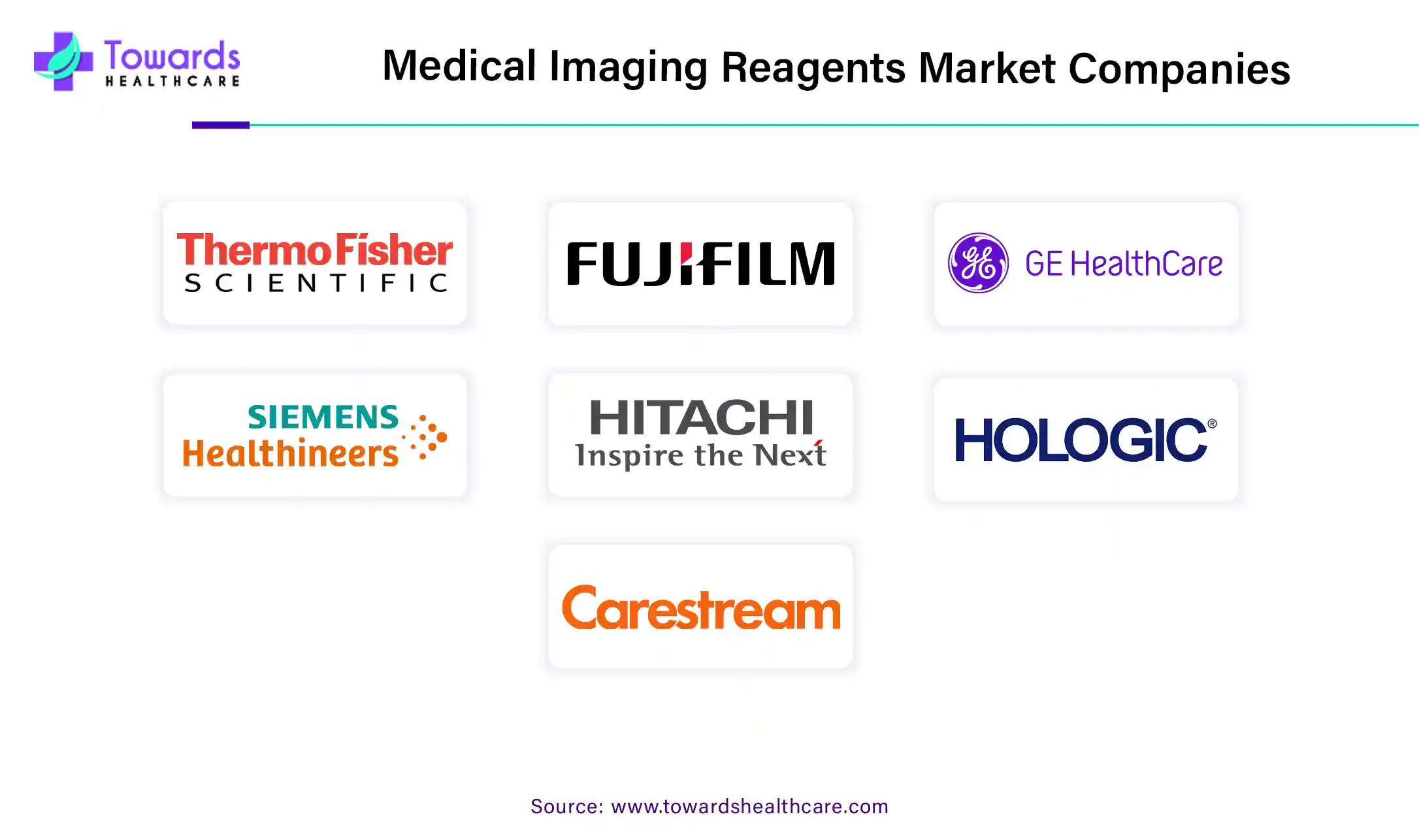April 2025

The global medical imaging reagents market size was predicted at US$ 11.25 billion in 2023 and is projected to grow to US$ 19.32 billion by 2034, rising at a compound annual growth rate (CAGR) of 5.04% from 2024 to 2034. The wide adoption of medical imaging reagents like fluorescent proteins, fluorescent probes and dyes, and nanoparticles in medical imaging technologies to achieve diagnostic accuracy drives the expansion of the medical imaging reagents market.

The medical imaging reagents market refers to the extensive utilization of various reagents required to perform many molecular diagnostic techniques such as magnetic resonance imaging (MRI), radiography, X-ray, fluoroscopy, etc. These reagents are used for medical imaging and function in the localization of targeted proteins, labeling of antibodies of interest, detection of labeled antibodies, and monitoring of intercellular functions. Intracellular protein trafficking, protein complex formation, conformational changes, visualization of cellular structures, early diagnosis and detection of diseases, etc., are possible with the help of these reagents.
In November 2023, Siemens Healthineers announced its goal to expand photon-counting scanning technology to scan 1 billion patients. For this purpose, the company invested $80 million to scale up detector manufacturing and provide detailed information to physicians about diagnosis and therapeutic decision-making. The two advanced and widely used imaging technologies, such as single-photon emission computed tomography (SPECT) and positron emission tomography (PET), use specialized reagents called radiopharmaceuticals. The imaging radiopharmaceutical reagents include fluorine, nitrogen, and gallium for PET and gallium, iodine, xenon, and indium for SPECT. They play major roles in the diagnosis and monitoring of oncological, neurological, and cardiovascular diseases.
The innovations in artificial intelligence, like deep learning algorithms, neural networks, and generative networks, improved the efficiency and accuracy of medical imaging analysis. Artificial intelligence helps in the radiological examination of various diseases, such as tumor diagnosis and detection of early signs of eye diseases in retinal imaging. AI-based diagnostic tools help in the interpretation of complex medical images, and AI-based image processing offers personalized treatment plans with improved patient care. The integration of artificial intelligence in healthcare favored the development of personalized precision medicine. AI algorithms assist surgeons with navigation, augmented visualization, and decision-making support by improving surgical precision, enabling minimally invasive techniques, reducing operational risks, and optimizing patient safety and surgical outcomes.

A Prevalence of Health Disorders and Emerging Technologies
The rising business opportunities in the healthcare sectors and the effectiveness of various tools and techniques in analyzing patient responses for delivering safe patient care and treatment plans are the key driving factors for the growth of the medical imaging reagents market. The rise in the number of diagnostic and therapeutic techniques offers a way to identify the potential benefits of drugs and treatments to cure several health conditions. The surge in cancer cases and other health disorders primarily drives the market’s growth by raising the need for clinical trials and test kits, including reagents for imaging procedures.
The growing research and development efforts in medical product manufacturing and new inventions in therapies are upholding the reputation of this market globally. The increased adoption of emerging technologies is raising economic growth significantly. Assay kits, reagents, reaction components, etc., play crucial roles in every medical practice, and suppliers are massively supporting their delivery to different medical sectors like hospitals, clinics, pathology, laboratories, home care settings, etc.
Limited Reagents Availability and Accessibility
The shortage of certain kinds of reagents due to their restricted availability imposes challenges in front of medical professionals for diagnostic purposes. The limited supply raises cost-effectiveness issues throughout the market because reagents that are available in fewer quantities become more expensive, which creates accessibility challenges for potential end users. Many reagents can be expensive and are widely used for imaging techniques, diagnosis, and drug development. The proper storage, supply, and maintenance of standard conditions is also another major challenge for keeping reagents active, stable, and safe to deliver quality and reliability.
Innovations by Market Players and Potential Pharmaceutical Agents
In February 2024, Hologic announced its new research in artificial intelligence, and the company is committed to delivering innovative educational opportunities at the Annual European Congress of Radiology for advancing women’s health. Hologic is also dedicated to presenting new data on next-generation deep learning solutions by showcasing their role in the detection of breast cancer and the optimization of radiologists' workflow. Moreover, pharmaceutical agents or other drugs used in medical imaging and radiology departments include antispasmodics, gastrokinetics, antihistamines, and steroids, which are more potent, ideal for emergency examinations, and speed up the examination time.
They are used to improve the contrast of radiographic images, and contrast media are not only pharmaceutical agents used in imaging and radiology but also exhibit several applications beyond this. Millions of diagnostic procedures will require these reagents to save the lives of people, which will remarkably expand the medical imaging reagents market.
By type, the contrast reagents segment dominated the medical imaging reagents market in 2023 due to their increased demand and increased product approvals. They are used to enhance the visibility of internal body structures, cell structures, organelles, etc., in imaging procedures like CT scans, MRI, X-rays, radiography, etc. Imaging techniques aid in distinguishing one structure or tissue from its surroundings and provide detailed information for further diagnosis, detection, and treatment. The increased prevalence of heart conditions requires angiography and angioplasty for early diagnosis and detection of severe risks associated with them, which ultimately raises the need for contrast reagents to provide better visualization of abnormalities.
By type, the optical reagents segment is expected to grow significantly during the forecast period due to the increased number of medical imaging procedures. They are widely used in techniques such as bioluminescence imaging, fluorescence microscopy, and near-infrared imaging. They play major roles in optical imaging to visualize detailed structures of cells, tissues, organs, and molecules by minimally or non-invasive methods.
By technology, the nanoparticles segment led the medical imaging reagents market in 2023 due to the rising burden of chronic diseases and the rising demand for nanoparticle-based reagents for medical imaging techniques like MRI and PET. Nanoparticles provide several applications in biomedical research and development and can act as probes for early diagnosis and detection of diseases like cancer. Carbon nanoparticles can play pivotal roles in nuclear imaging techniques, and nanoparticle-based X-ray contrast agents function in multimodal and hybrid imaging.
By technology, the fluorescent dyes and probes segment is anticipated to grow significantly in the coming years due to their increased demand as important reagents for optical imaging like near-infrared imaging. They help in the labeling of targeted antibodies and proteins, detection of labeled antibodies and targeted molecules, recognition of conformational changes and intercellular modifications, etc. The visualization of cellular events and applications in cell imaging drive the importance of this segment in diagnostics.
By application, the diagnostics segment held the major share of the medical imaging reagents market in 2023 due to the rising shift towards disease diagnosis and the rising health awareness about early diagnosis and prevention of diseases. Molecular diagnostics including several techniques, are gaining popularity due to their versatility and reliability. Several procedures are performed in hospitals, clinical laboratories, home settings, etc., with enhanced accuracy and precision in diagnostics and therapeutics.
By application, the drug discovery and development segment is expected to grow at a significant rate over the forecast period due to the rising prevalence of chronic diseases and the increased demand for safe and effective drugs to treat them. The emergence of advanced tools and techniques such as next-generation sequencing, bioinformatics databases, and programming languages are also driving the expansion of the drug discovery and development segment. Scientific research and tremendous advancements in related sectors boost the need for drug discovery and development to deliver better medical services and solutions.
North America dominated the medical imaging reagents market due to the high number of medical imaging technologies used in healthcare sectors and the presence of supportive government organizations. The Radiological Society of North America (RSNA), the NIBIB-funded Medical Imaging and Data Resource Center Project, the American College of Radiology (ACR), etc., are some of the government pillars boosting the progressiveness of this market. Moreover, hundreds to thousands of people undergo medical imaging examinations, which require hundreds of CT scans and X-rays in hospital care settings.
Hospitals are well-equipped with a skilled team of healthcare professionals, which makes the medical tests possible and successful. The adoption of several imaging instruments, such as CT scanners, MRIs, X-ray machines, and ultrasound scanners, by hospitals and other medical settings also drives the growth of the medical imaging reagents market. The accurate diagnosis and timely treatment of patients are supported by professionals like nurses, administrative teams, radiologists, etc., due to expanded healthcare facilities and a well-organized healthcare infrastructure that welcomes knowledgeable and skillful people to work there.
Asia Pacific is expected to be the fastest-growing region in the medical imaging reagents market during the forecast period due to favorable government initiatives and the increased shift towards medical imaging technology. The Indian Council of Medical Research, the National Health Research Program Singapore Accreditation Council (SAC), and Enterprise Singapore are some of the supportive government entities promoting the importance of medical imaging technology and related reagents.
The Ministry of Electronics and Information Technology is supported by the Government of India, which has sponsored many R&D projects. The development of telemedicine technology to provide quality healthcare in rural areas or remote locations also drives the market in the Asia Pacific region. In October 2024, Singapore invested $150 million in the acceptance of generative artificial intelligence to optimize public health and strengthen the adoption of artificial intelligence in medical imaging by 2025.

By Class
By Technology
By Application
By Region
April 2025
April 2025
April 2025
April 2025